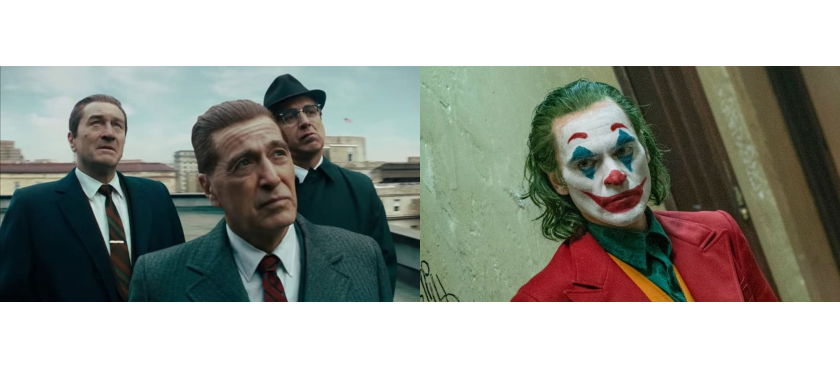This past October, director Martin Scorsese gave an interview with the British magazine Empire in which he dismissed the Marvel movie series as mere entertainment akin to theme-parks rather than “real” cinema. The backlash, as one might imagine, came fast and furious. Scorsese felt the need to write an Op-Ed for the New York Times in order to explain (defend?) himself. The crux of his argument is not that the filmmakers and artists involved in these franchise films aren’t talented or that the films aren’t entertaining, rather, he argues, they aren’t art. They are too formulaic and predictable and thus don’t provide the viewer (or better, the cineaste) with a sense of awe or wonder over the cinematic experience.
Many people disagreed; memes popped up on the internet ridiculing his statements (OK Boomer…), letters to the editor were published denouncing his stance and others still wrote in defense of the action genre touting the incredible successes of the Marvel films. The debate that Scorsese (re)ignited, however, was certain not new; both popular cinema and artistic cinema (or what later became known as art house cinema) have been around probably since cinema’s beginnings in the late 1800s. The distinction between “high art” and “low art” raged again in the ‘60s and ‘70s and was consequently deconstructed during the heady days of post-modernism. Today cultural critics tend to dismiss the argument as outdated or simply as tired debate; however, for some artists, there is a nostalgia for the “golden” days of cinema, in which art house films or auteurist cinema was an exciting art form that not only contributed to cultural and political debates, but expanded our understanding of what cinema could do and could be.
Martin Scorsese is one of those artists—and for good reason. Even those most critical of his comments and dismissal of popular cinema acknowledge that Scorsese is one of the greatest filmmakers of our time. To get a sense of his brilliance as a filmmaker, one need only to (re)watch his 1980 masterpiece Raging Bull, with a tour-de-force performance by his favorite actor Robert De Niro as the boxer Jake LaMotta (De Niro again demonstrated his own acting brilliance four years earlier in Scorsese’s Taxi Driver, the film which supposedly inspired John Hinckley Jr to try to assassinate Ronald Reagan in order to draw the attention of the film’s other young star Jodie Foster). While both films are somewhat brutal displays of the underside of American society, Scorsese can also master the gentle and genteel as is evidenced by his gorgeously shot 1993 adaptation of Edith Wharton’s The Age of Innocence (to get a sense of the masterful cinematography check out this excellent video analysis of the film). The Age of Innocence opens, not surprisingly, with music and a scene at the opera. Besides his gritty dramas and portrayals of gangsters, Scorsese is also a well-known music fan, having shot classic music documentaries, including The Last Waltz (1978), the final concert of The Band, an 18min music video of Michael Jackson’s Bad and the 2008 Rolling Stones’ concert film Shine a Light. If that weren’t enough to seal his legacy as one of the all-time great American filmmakers, Scorsese is also the founder and chair of The Film Foundation, a non-profit “dedicated to protecting and preserving motion picture history.” So that’s why we should probably care about Scorsese’s opinion and this debate, regardless of which side one is on.
But what should you be watching? Well for starters his new film The Irishmen, streaming on Netflix and starring—who else?—Robert De Niro, along with other great American character actors Al Pacino, Joe Pesci and Harvey Keitel, is a 3.5 hour paean to an America of the 1950s and 60s, as well as a fascinating look at organized labor and the mafia in its hey-day. As in all of Scorsese’s films, The Irishman features great acting and cinematography and insight into the New England Italian-American culture of the 1950s.
But also check-out Joker, Todd Phillips latest contribution to the Batman franchise (while not based on a Marvel comic, I think it still falls into the category that Scorsese meant—and in a wonderful twist of irony, features Robert DeNiro in a supporting role!). Joker not only opened the prestigious Venice Film Festival, but it also took home the Golden Lion for Best Film. While critics have been less than kind, Joker is nevertheless more than just a comic-book adaptation, rather it’s a psychological exploration of a tortured soul (not unlike many of Scorsese’s protagonists) and, also in the finest Scorsese tradition, a grim homage to New York of the 1970s at its grittiest (not unlike Mean Streets or Taxi Driver?). In sum, Scorsese is right—there is a difference between entertaining “movies” and art-house “cinema.” But surely there is enough room for both.

By Dr. David Coury
David Coury is a Professor of Humanities (German) and Global Studies and also Co-Director of the Center for Middle East Studies and Partnerships. Additionally, he is the director of the Green Bay Film Society, whose International Film Series screens international and independent films twice a month at the Neville Public Museum. Admission is free and all films are open to the public.
